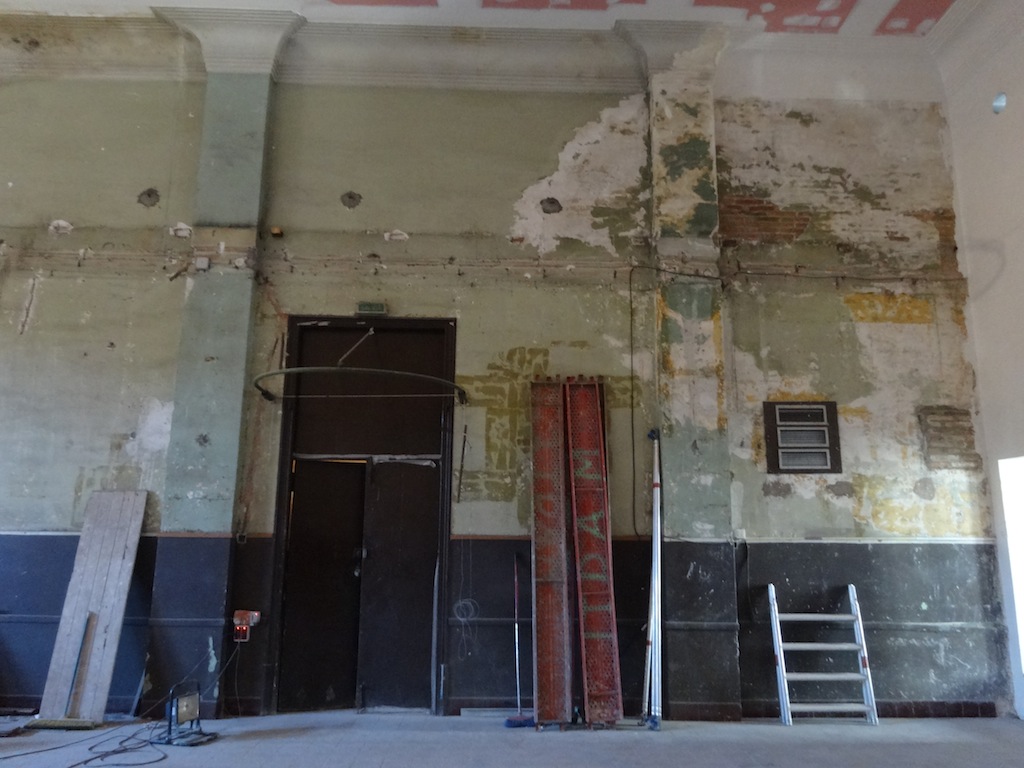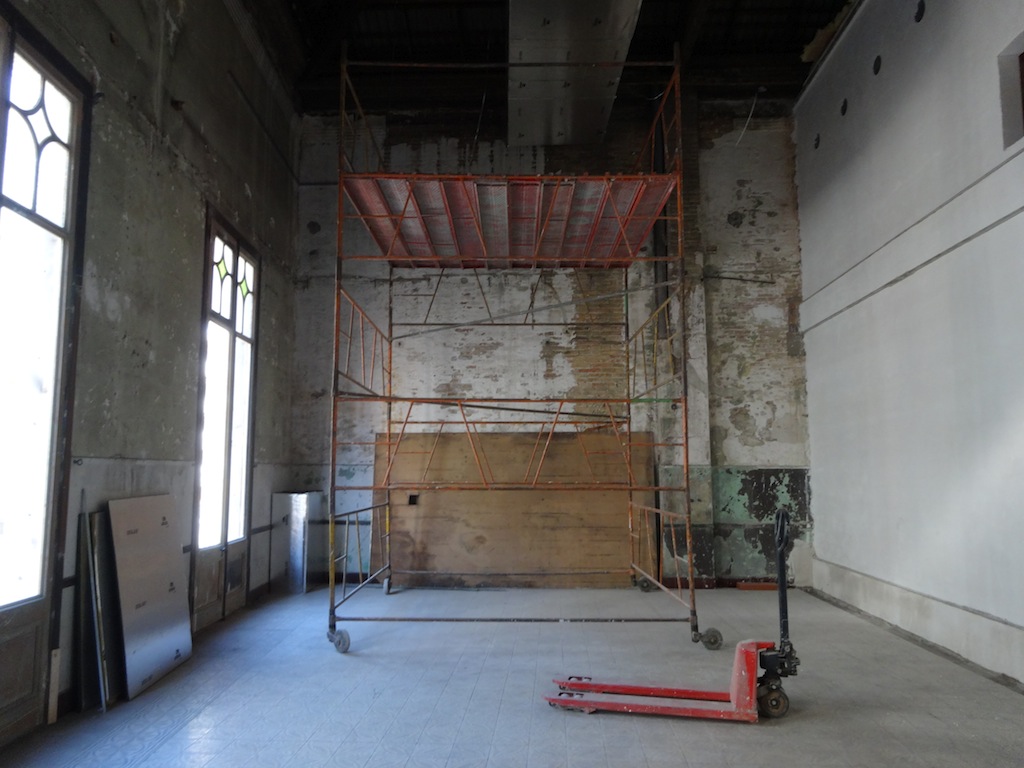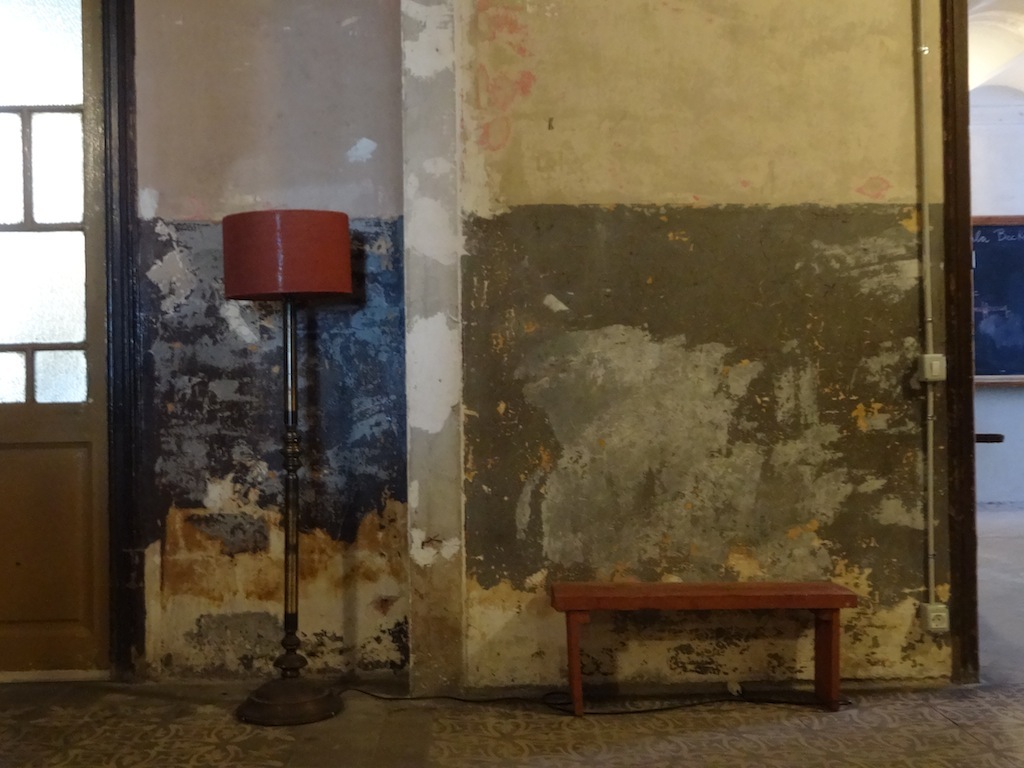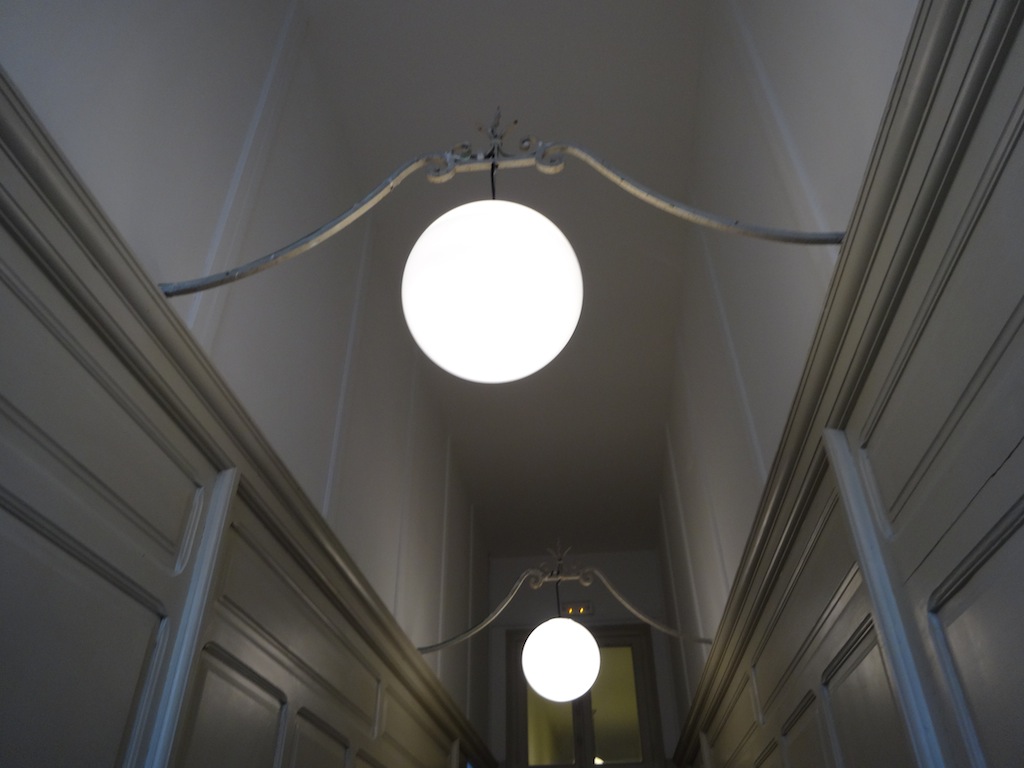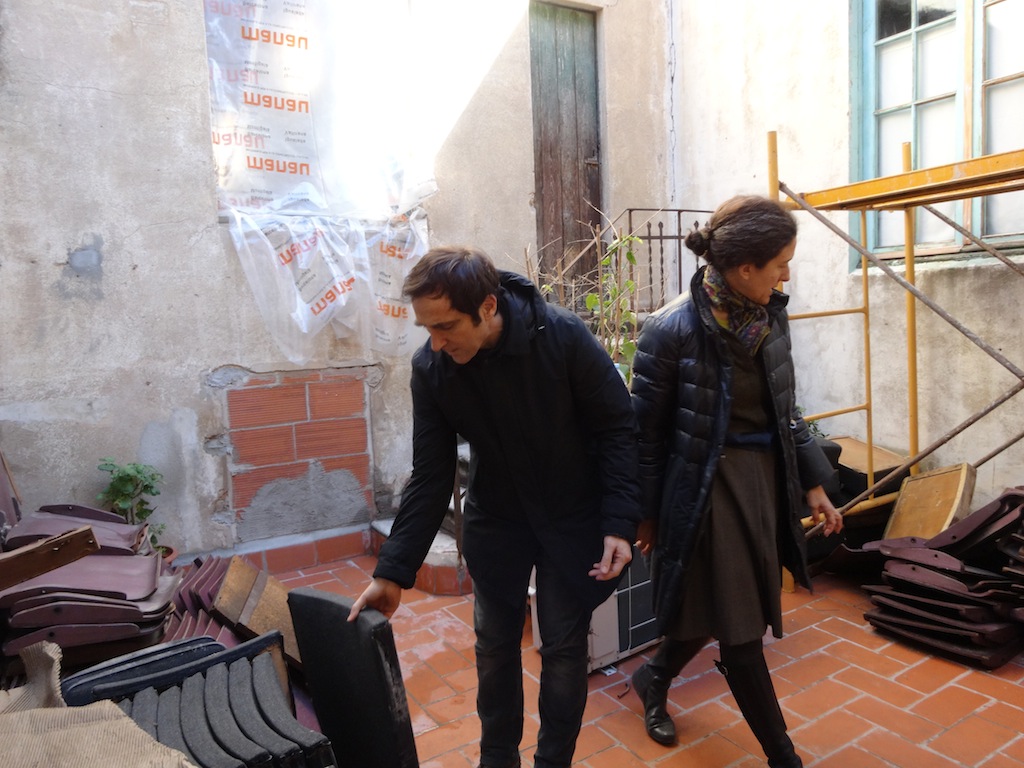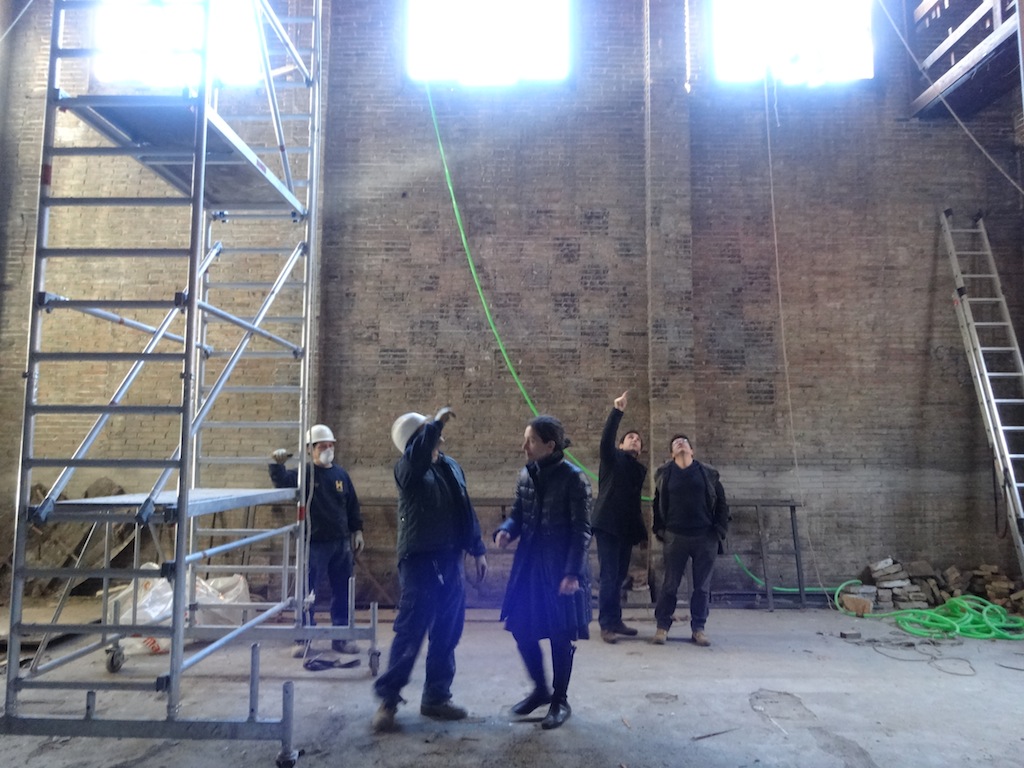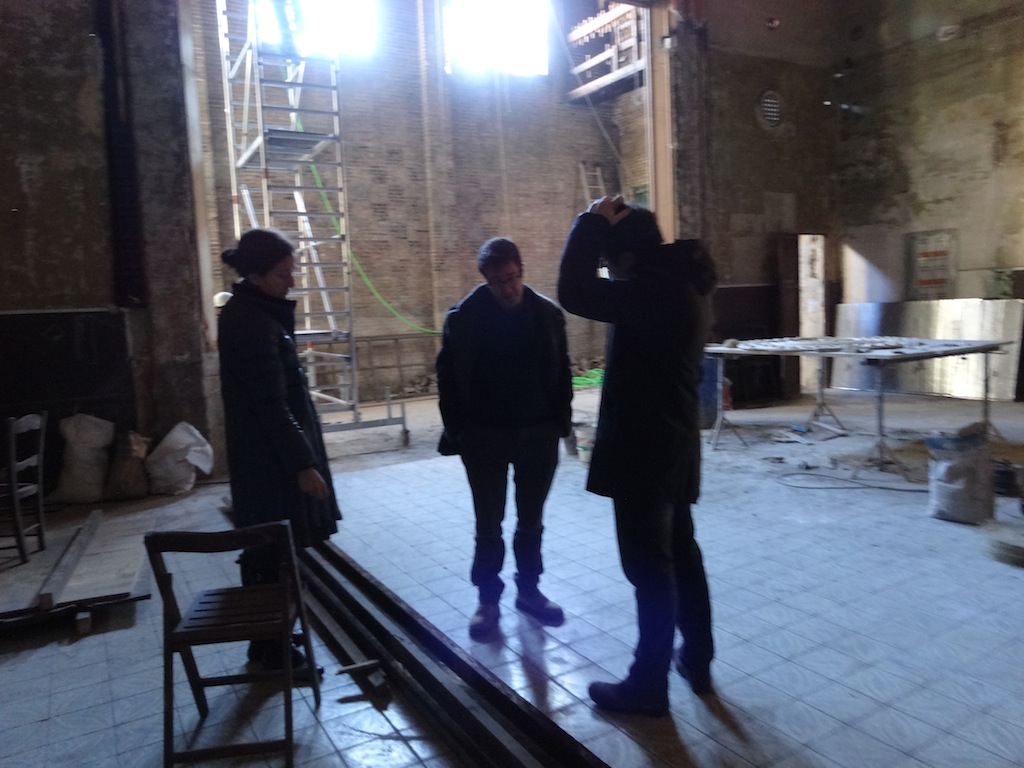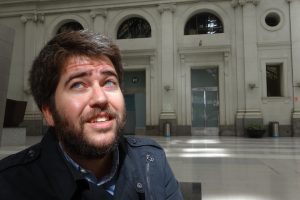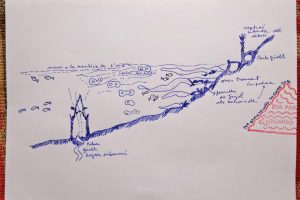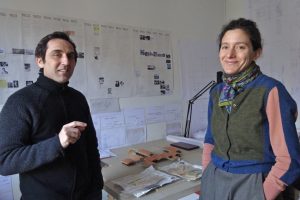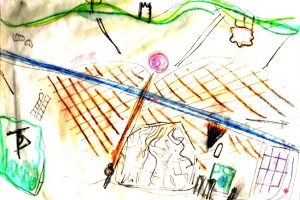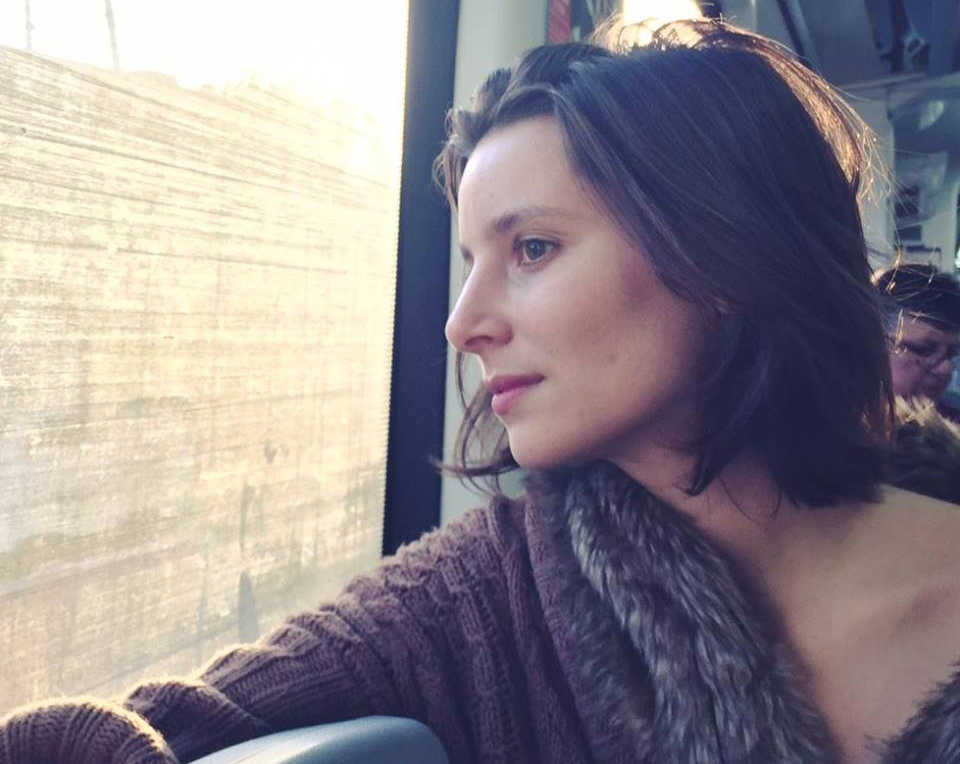La nova Sala Beckett per Flores&Prats
The Sala Beckett is one of the references of Barcelona’s contemporary drama scene. It opened its doors in 1989 in the neighbourhood of Gràcia and, for twenty years, it has contributed to the development of young playwrights’ careers, both Catalan and International. It has always been known -mainly- as a theatre, but within its walls an important task of teaching and experimentation has also been developed. Now, it is beginning a new stage in a new space: the building of the former Consumer Cooperative Pau i Justícia, an organization born in the late nineteenth century with the desire to associate the factory workers in the Poblenou area and to promote cultural projects among them. This cooperative came to have over a thousand members and it used to be based in the building created by master builder Josep Masdéu in 1924. The whole structure once contained stores, housing, a meeting room and a café (among other spaces). To accommodate the new headquarters of the Sala Beckett, architects Eva Prats and Ricardo Flores are in charge of its major transformation.
At your studio you have shown me a miniature of the new Sala Beckett and I have seen that the two ‘tt’ at the end of ‘Beckett’, have been separated from the rest of the name and placed on the other side of the building’s façade. Why did you design it like this?
Ricardo. Because we also wanted to give importance to the façade that overlooks Carrer Batista (which is smaller), we did not want to focus only on the side oriented towards the main street Pere IV.
Eva. The windows on both facades have are continuous, it was also interesting that the letters in ‘Beckett’ followed the same structure.
How do you reinterpret this space’s history in order to adapt it to its new role?
Eva. We are trying to respect as much as possible the prints that time has left on its walls and we also seek for new ways of reusing the materials that we found in the space, for example, the wooden mouldings that were abandoned in the yard.
Ricardo. The space will be distributed in a different way, but we want to preserve its historical essence. Part of the building was a grocery store, so we want the lobby of the theater to have the same public dimension: inviting people from the street to come in.
When you talk about recycling materials and respecting the space’s history, I am surprised because I have the idea, provably mistaken, that architects tend to look only for cleanliness, purity of shapes, colours, etc. In other words, it seems that the rationalism that has been very popular during the recent decades, has discredited the taste for the artisanal dimension of architecture that had been cultivated in the West, almost until World War II.
Ricardo. There is a lot of truth in this. But I think that we have now surpassed this obsession with purity that you are mentioning. We could go back to what we discussed earlier in our studio about how the architect Miralles helped us to look at the history and the dust that has been accumulated over time as a positive thing. As for handicrafts, for us they are something very important.
Eva. Yes, partly because we love the city and the city is something unfinished, raw, full of pollution and craftsmanship is also present in many of the traditional buildings of Barcelona. We reflect this in our architecture and the new Sala Beckett is a clear example. Craftsmanship will have a key role in this building, for example, we are working with a very well known plasterer: Manuel Moya, he is the same professional who was able to reproduce all the plaster work in the Liceu after photographs, since the original works were burned in the fire that devastated it in 1994.
How do you connect your creative way of working with the way that the Sala Beckett has traditionally functioned?
Eva. We got this project after we won a contest. There were five architect studios previously chosen by Toni Casares, the director of the Sala Beckett. One day, he called all of us in is office and explained the dynamics of the Beckett. While we were listening to him, we felt very identified with his procedures because in our studio we use a similar methodology to the one that he was describing. For example, after a play is written, it can not simply be left it in a drawer, it must be tested with the public, hundreds of corrections ought to be made, searching for the process.
Ricardo. He also said that the Sala Beckett was an economic disaster and that it had to be subsidized, which gave him a lot of pride because the lack of commercial pressure allowed him to experience and give new directors the chance to present their work. We have no subsidies, but in our studio we also do a lot of experimentation regardless of its economic benefits. We do plenty of tests before creating the final miniature and we also do a lot of research on topics that interest us such as the lighting or the different types of materials. Like the Sala Beckett, in 15 years that we have run our studio, so far we have never prioritized the commercial aspect of architecture. Our studio is a little like a workshop, we seek personal results and we dedicate as much time as needed in each project.
Eva. We also work a lot through dialogue, Ricardo and I consult doubts and ideas to each other all the time, but we also need to establish a solid communication with those who will have to use the space we create. In this sense, we value the Beckett’s director, Toni Casares, is open to track the work that we are doing and to compare his own vision with ours.
You talked about respecting the previous structure of the building. What can be said about the surrounding area? The Beckett was in the Gràcia neighbourhood and now it will be in Poblenou, how does this change, with all it implies, affect your approximation to this work?
Ricardo. Toni Casares wanted to enter quietly in Poblenou; he intends to integrate with humility and gradually, without attracting attention. We work in a way that supports Toni’s idea. He even says that every old building has its own ghosts and we will not scare them away! ∗
La Sala Beckett és un dels referents de la dramatúrgia contemporània a Barcelona. Va obrir l’any 1989 al barri de Gràcia i, durant vint anys, ha donat projecció a joves dramaturgs tant catalans com internacionals. Principalment ha estat coneguda com a teatre, però també ha estat un espai d’aprenentatge i d’experimentació. Ara comença una nova etapa a l’edifici de l’antiga Cooperativa Pau i Justícia, una associació nascuda a finals del segle XIX amb la voluntat d’associar els treballadors de les fàbriques del Poblenou i de promoure projectes culturals. La cooperativa va arribar a tenir més de mil socis, i l’edifici de la seva seu, construït el 1924 pel mestre d’obres Josep Masdeu, contenia, entre d’altres espais, magatzems, habitatges, una sala de reunions i un cafè. Per allotjar la nova seu de la Sala Beckett, els arquitectes Ricardo Flores i Eva Prats s’estan encarregant de la important transformació de l’edifici.
Abans, a la maqueta, he vist com les dues lletres te del final de Beckett han quedat separades de la resta del nom i s’orienten a la façana del costat. Per què ho heu dissenyat així?
Ricardo: Perquè també volíem donar importància a la façana del carrer de Batista, que és més petit, no solament centrar-nos en la que dóna al carrer de Pere IV. També volem crear l’efecte com si les lletres tinguessin vida i anessin desplaçant-se per la cornisa fent equilibris.
Eva: Les finestres de totes dues façanes tenen una continuïtat; també era interessant que les lletres del cartell seguissin aquest mateix joc.
I, com reinterpretareu la història del local per adaptar-lo a la seva nova funció?
Eva: Estem intentant respectar al màxim com l’empremta del temps s’observa a les parets, i també busquem maneres de donar un nou ús a materials que hem trobat a l’espai com, per exemple, unes motllures de fusta que estaven abandonades al pati. Ricardo: La distribució de l’espai canviarà molt, però volem que la seva essència històrica es conservi. Una part de l’edifici havia estat una botiga de queviures, i nosaltres volem que el vestíbul del teatre tingui la mateixa dimensió pública, que convidi a entrar la gent del carrer.
Quan parleu de recuperar materials o de respectar la història de l’espai, em sorprèn perquè tinc la idea, potser errònia, que els arquitectes tendeixen a buscar només la netedat, la puresa de les formes, dels colors, etc. En altres paraules, sembla que el racionalisme que s’ha portant tant durant les darreres dècades hagués desprestigiat el gust per la dimensió artesanal de l’arquitectura que s’ha cultivat a Occident fins ben bé la Segona Guerra Mundial.
Ricardo: Està ben vist, això. Però crec que ara ja s’ha superat aquesta obsessió per la puresa que menciones. Podríem reprendre el que hem comentat abans, a l’estudi, de com el Miralles ens va ajudar a contemplar la història i la brutícia que s’ha acumulat en el temps com una cosa positiva. Pel que fa a l’artesania, per a nosaltres també és molt important.
Eva: Sí, en part és perquè ens agrada molt la ciutat i la ciutat és una cosa inacabada, crua, plena de contaminació, i l’artesania també està present en molts dels edificis tradicionals de Barcelona. Volem reflectir tot això en la nostra arquitectura, i en el projecte de la Sala Beckett es veurà molt clarament. L’artesania hi tindrà un paper fonamental. Aquí, per exemple, estem treballant amb un guixaire molt reconegut: és el mateix que va ser capaç de reproduir tots els guixos del Gran Teatre del Liceu a partir de fotografies, ja que tots els originals es van cremar.
Com es connecta la vostra proposta creativa amb la manera de funcionar que tradicionalment ha tingut la sala?
Eva: Vam aconseguir aquest projecte per concurs. Érem cinc estudis d’arquitectes prèviament escollits, i el Toni Casares, el director de la Beckett, ens va reunir a tots un dia i ens va explicar la manera de funcionar que té la sala. Mentre l’escoltàvem ens vam sentir molt identificats, perquè el nostre estudi funciona amb una metodologia molt similar a la que ell estava descrivint. Per exemple, una obra de teatre no es pot escriure i deixar-la en un calaix, sinó que cal posar-la a prova amb el públic, fer centenars de correccions, buscar el procés.
Ricardo: També va dir que la Sala Beckett era un desastre econòmic i havia de ser subvencionada, cosa que l’enorgullia molt, perquè això li permetia experimentar i donar la possibilitat a directors novells de presentar les seves obres sense estar supeditats al mercat comercial. Nosaltres no tenim subvencions però hem fet obra pública, que d’alguna manera també és estar subvencionat. Hem pogut fer proves abans de crear la definitiva i hem fet molta recerca amb temes que ens interessen, com la llum o els diferents tipus de materials. Igual que la Sala Beckett, en els quinze anys de despatx que portem no hem prioritzat mai la part comercial. El nostre estudi té molt de taller, busquem uns resultats personals i dediquem tot el temps que calgui a cada projecte.
Eva: També treballem molt a través del diàleg. El Ricardo i jo consultem dubtes i idees tota l’estona, però també necessitem establir una comunicació sòlida amb qui hagi de fer ús de l’espai. En aquest sentit valorem molt que el Toni Casares estigui obert a fer el seguiment de l’obra i a contrastar la seva visió amb la nostra.
Ricardo. Toni Casares wanted to enter quietly in Poblenou; he intends to integrate with humility and gradually, without attracting attention. We work in a way that supports Toni’s idea. He even says that every old building has its own ghosts and we will not scare them away! ∗
Parleu de respectar l’estructura prèvia de l’edifici. Què podeu dir respecte als seus voltants? La Sala Beckett era a Gràcia i ara és al Poblenou; com afecta la vostra aproximació a l’obra el fet que hagi canviat de barri, amb tot el que això implica?
Ricardo: El Toni Casares vol entrar discretament al Poblenou, té la intenció d’integrar-se amb molta humilitat i de manera gradual, sense cridar l’atenció amb grans escarafalls. Nosaltres treballem de manera que el procés que proposa el Toni quedi reforçat amb el projecte. A més, diu que tot edifici antic té els seus fantasmes, i no serem nosaltres qui els farem fugir! ∗


